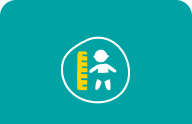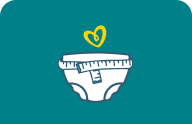Breech Baby: Causes, Positions, & Delivery Options
Discovering that your little one is in a breech position can be concerning, but it's not uncommon—about 3 to 4% of full-term pregnancies involve a breech baby. The good news? There are ways to encourage your baby to turn, and if they remain breech, safe delivery options are available.
Here’s what you need to know:
What is a breech baby? A baby positioned bottom- or feet-first instead of head-down before birth.
When should a baby be head down? Most babies turn between 32 to 36 weeks of pregnancy.
How to tell if your baby is breech? Your provider may feel your abdomen or use an ultrasound to check.
Can a breech baby be turned? Some babies flip on their own, while external cephalic version (ECV) or natural techniques may help.
What are the delivery options? Your provider will assess whether a vaginal breech delivery or a C-section is the safest choice.
Keep reading for a full breakdown of breech presentations, causes, ways to turn a breech baby, and delivery options so you can feel prepared for the best outcome.
What Is a Breech Baby?
Throughout your pregnancy, your little one moves and shifts positions within the uterus. By around 32 to 36 weeks, most babies settle into a head-down position in preparation for birth. However, in about 3 to 4% of full-term pregnancies, the baby remains in a breech position, meaning their feet or bottom are positioned to come out first instead of the head. This is also known as a breech presentation.
A breech baby is more common in earlier stages of pregnancy, but most babies naturally turn head-down before birth. If your little one remains in a breech position at full term or if you experience preterm labor, your healthcare provider may discuss options for delivery, as a breech birth can sometimes require special considerations.
What Causes a Breech Baby?
The exact reasons why a baby remains in a breech position aren't always clear. However, several factors may increase the likelihood of a breech presentation:
You are pregnant with twins
The uterus has more or less amniotic fluid than usual
The uterus has an abnormal shape or has abnormal growths, such as fibroids
You have a condition called placenta previa, which is when the placenta covers the cervix.
It's important to discuss any concerns with your healthcare provider, who can assess your individual situation and provide guidance tailored to your needs.
Types of Birth Positions
Before birth, babies can assume various positions within the uterus. Understanding these positions is essential, as they can influence the delivery method. Below are some common fetal presentations.
Shoulder Presentation or Transverse Lie
In a transverse lie, the baby lies horizontally in the uterus, making the shoulder the presenting part during delivery. This position is uncommon at term and often necessitates a cesarean delivery.
Frank Breech Presentation
A frank breech is when the baby's buttocks are positioned to enter the birth canal first, with legs extended straight up in front of the body and feet near the head. This is the most common type of breech presentation.
Footling Breech
In a footling breech, one or both of the baby's feet point downward and will deliver before the rest of the body. This presentation is less common and can pose challenges during vaginal delivery.
Complete Breech Presentation
A complete breech means the baby's buttocks point downward, with both hips and knees flexed, resembling a cross-legged sitting position.
Understanding these positions helps in planning for a safe delivery. If your little one is in a breech or transverse position as your due date approaches, consult your healthcare provider to discuss the best delivery options.
When Does a Baby’s Head Turn Down?
During pregnancy, babies often change positions as they grow and develop. Typically, by the third trimester—which spans from 28 to 40 weeks—most babies settle into a head-down position, known as the vertex position, in preparation for birth. It's important to note that the exact timing can vary for each pregnancy. Regular prenatal check-ups allow your healthcare provider to monitor your baby's position and discuss any concerns you may have.
How do You Know If Your Baby is Breech?
At one of your prenatal visits in the lead-up to your due date, your provider will check that everything is progressing as planned. During routine prenatal visits, they may feel your abdomen to determine your baby's orientation. If a breech presentation is suspected, an ultrasound may be recommended to confirm the baby's position.
While medical assessments are definitive, you might notice certain signs suggesting your baby is in a breech position:
Location of movements. Feeling kicks or movements lower in your abdomen can indicate a breech position.
Head position. A firm, round lump beneath your ribs could be your baby's head, suggesting they're not head-down.
Remember, these signs are not conclusive. Always consult your healthcare provider for an accurate assessment of your baby's position.
How to Flip a Breech Baby
If your baby is breech, your provider may consider turning your baby so that a vaginal delivery can proceed, if that’s in the cards for you anyway. Alternatively, your provider may recommend that a cesarean delivery is the safer option.
Keep in mind, your little one’s position might change at some point before delivery day, so your provider may recommend waiting and seeing.
If you are 37 weeks pregnant or more, your provider may recommend turning your baby through a process called external cephalic version or ECV. ECV involves your provider placing hands on your abdomen and applying firm pressure to turn the baby. This procedure will most likely be done near a delivery room. Your provider may offer an epidural block to help with any pain this procedure causes.
An ECV is about 60% effective and there is a small risk of complications. You and your baby will be monitored closely before, during, and after the procedure to ensure that both of you are doing well.
Before attempting any natural methods, it's crucial to consult your healthcare provider to ensure they're safe and appropriate for your specific situation.
If these methods are unsuccessful, or if it's deemed safer, your provider may recommend a cesarean delivery. Remember, your little one’s position can change before delivery, so ongoing discussions with your healthcare provider are essential to determine the best plan for you and your baby.
How Does Labor Begin with a Breech Baby?
When a baby is in a breech position—meaning the buttocks or feet are positioned to be delivered first—labor and delivery require special considerations. In many cases, a planned cesarean section is recommended to ensure the safety of both parent and baby. This approach helps mitigate risks such as the baby's head or shoulders becoming stuck during delivery, which can occur more frequently in vaginal breech births.
Regardless of the chosen delivery method, labor with a breech baby often begins similarly to that of a baby in the head-down position, with signs such as regular contractions and the breaking of water. Close monitoring by your healthcare team is crucial to manage the delivery safely.
Ultimately, the decision on how to proceed with a breech birth should be made collaboratively between you and your healthcare provider, considering all medical factors and personal preferences.
Twins and Breech Presentation
Twins can be delivered vaginally if the first baby—the lower-positioned twin—is correctly positioned with the head facing down. Of course, that’s if the twin pregnancy is otherwise progressing well and there are no complications. If the first twin baby (the one lower down) is in a breech position, the provider may recommend a cesarean section. Triplets or more will most likely require a cesarean section.
Breech Baby: Later Complications
Most breech babies grow up healthy and do not experience long-term health issues related to their birth position. Pediatricians routinely check a baby’s hips after delivery and provide follow-up recommendations if necessary.
The Bottom Line
As your due date approaches, discovering that your little one is in a breech position may feel stressful, but your healthcare provider is experienced in handling these situations. They will guide you through the safest delivery options to ensure both you and your baby are well cared for.
Before you know it, you'll be bringing your newborn home, adjusting to late-night feedings, and celebrating every milestone. Stocking up on essentials like diapers can help make the transition smoother.
You can also take advantage of the Pampers Rewards App, where you can earn Pampers Cash on diaper purchases and unlock discounts and digital offers to support you in your parenting journey.
How We Wrote This Article The information in this article is based on expert advice found in trusted medical and government sources, such as the American Academy of Pediatrics and the American College of Obstetricians and Gynecologists. You can find a full list of sources used for this article below. The content on this page should not replace professional medical advice. Always consult medical professionals for full diagnosis and treatment.
Join a World of Support
through Pregnancy and Parenthood.
TRACK WITH TOOLS
LEARN WITH EXPERTS
GET REWARDED












